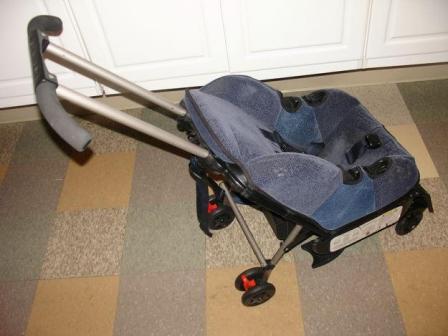For a variety of reasons, Bus Nerd and I are not especially big on baby gear. Most of what we do have we either borrowed from friends or purchased used. So it is particularly ironic that the one piece of baby gear we bought brand, spanking new–and paid a small fortune for, I might add–is the one we almost never use: Chicklet’s car seat.
Like all parents, we wanted our kid’s seat to be safe, and we were concerned about buying a used one. (When an environmentalist tells you it’s not a good idea, it gives you pause.) But here’s the thing: In order to use the seat, which weighs 15 pounds and is big enough for me to fit in, I have to get it–and Chicket–to an actual car. Let’s just say that renting a Zipcar (the nearest one’s a quarter of a mile from our house) without the help of Bus Nerd is less than enjoyable.
Ah, but if I’d done my homework, I would have known that there is a better option. Car-free parents, behold:

A car seat/stroller combo
A car seat with wheels?! Who knew?
I learned about this fabulous invention from fellow TAC member–and fellow parent–Tina, who uses it on those occasions when her family takes a cab to the airport, and when they travel to places where they’ll need a car. Tina says the seat’s not especially comfortable, but, given that Chicklet rides in a car an average of once a month, that’s hardly a deal breaker. Did I mention that both of the brands I researched got high marks in the safety department?
Anyone in the market for a (gently) used Britax?

